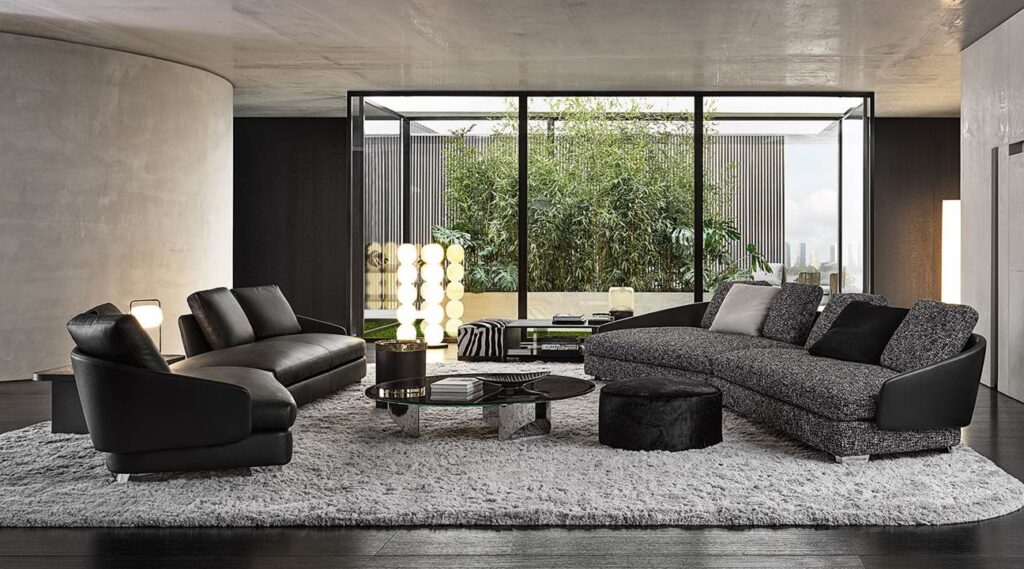

When it comes to Interior Design, every little thing matters for the space’s look and function as a whole. Among the most impactful elements that designers use are textures and patterns. Collectively, these two elements produce an atmosphere that is both dynamic and aesthetically pleasing. Textures and patterns are essential in interior design for a number of reasons, including generating emotions and creating depth and complexity.
The JD Institute helps the students in exploring the significance of these components, the ways in which texture variation and pattern mixing can enrich environments, and the significant influence they hold in creating remarkable interiors.
In Interior Design, textures relate to the surface characteristics of materials, covering a range from grainy to sleek, glossy to matte, and soft to hard. By including several textures, a space can be enhanced to create a more welcoming, vibrant, and captivating atmosphere. It impacts the visual and environmental ambiance of a room. Addition of texture variation enhances the depth of a room, therefore avoiding the perception of flatness or monotony. Through the process of layering several textures, designers have the ability to construct an immersive atmosphere. Designed by Frank Lloyd Wright, the Guggenheim Museum in New York employs textured concrete walls and a spiraling ramp to provide a visually captivating experience. Another notable illustration is the Ritz-Carlton Hotel in Hong Kong, which blends luxurious textiles with sleek marble to create a lavish and welcoming ambiance.

One more important aspect of interior design is patterns. Geometric, floral, or abstract designs are all examples of patterns. Design components in a room can take many forms, including wallpaper, fabrics, flooring, and even architectural details. Patterns enhance the aesthetic, highlighting a room in a unique way. By combining contrasting patterns, interior designers can guide the natural eye throughout a space, thereby drawing attention to specific areas. These factors contribute to the establishment of a harmonious and balanced environment, therefore ensuring that no area of the space is neglected. For example, the High Line Hotel in New York City uses a combination of vintage patterns and contemporary designs to create an eclectic and engaging environment. Similarly, the Ace Hotel in Los Angeles features a mix of geometric and tribal patterns to reflect a modern yet bohemian aesthetic.

JD Institute’s Interior Design course offers in-depth training on Texture and Pattern studies, teaching students to tackle complex design challenges with confidence.
To perfect the skill of texture variety and pattern mixing in interior design, you must follow specific principles:
Begin by using walls of neutral colours and larger furniture pieces. This serves as a blank canvas that enables textures and patterns to visibly appear without overpowering the interior.
Blend different materials including timber, metal, textile, and stone. An example of achieving a balanced and beautiful appearance in a kitchen is by combining a sleek marble surface with elegant rustic oak cabinets.
To achieve a balanced pattern mix, select a dominating layout and then overlay it with smaller, complementary patterns. When your wallpaper showcases a bold and striking pattern, it is advisable to choose for smaller designs for cushions, blankets, or carpets.
The principle of colour coordination is to ensure that the colours of textures and patterns are complementary to one other. Hitting colours can disturb the balance of the environment. Implementing a uniform colour scheme helps enhance the coherence of the design.

Incorporating these practices into Interior Design is essential for creating a vibrant and dynamic space. At JD Institute, students are equipped with the skills and knowledge to create stunning interiors that reflect their unique vision while maintaining harmony and balance. Choosing this institute means investing in an education that prepares you to excel in a competitive field, with the expertise to create exceptional, innovative designs.